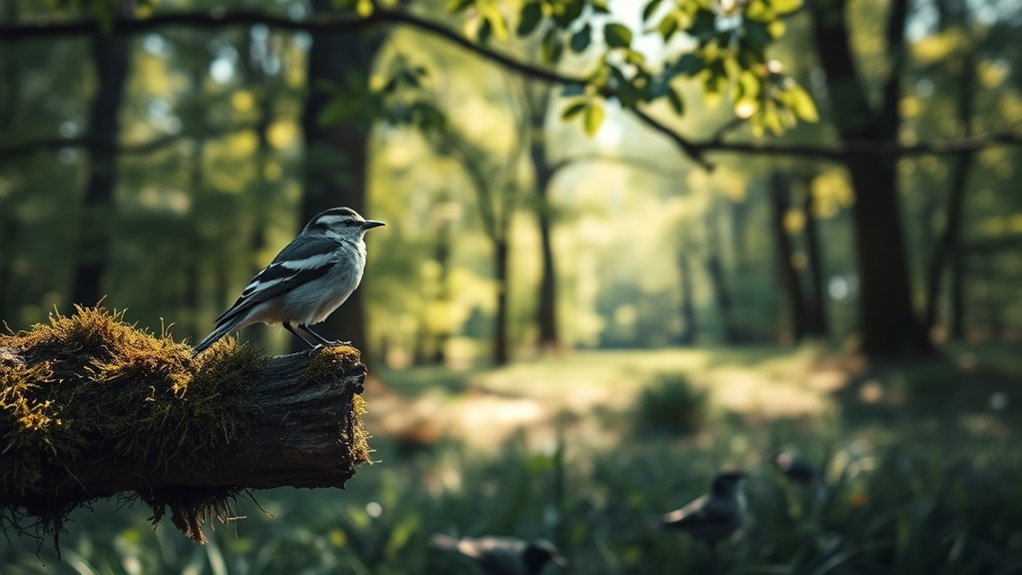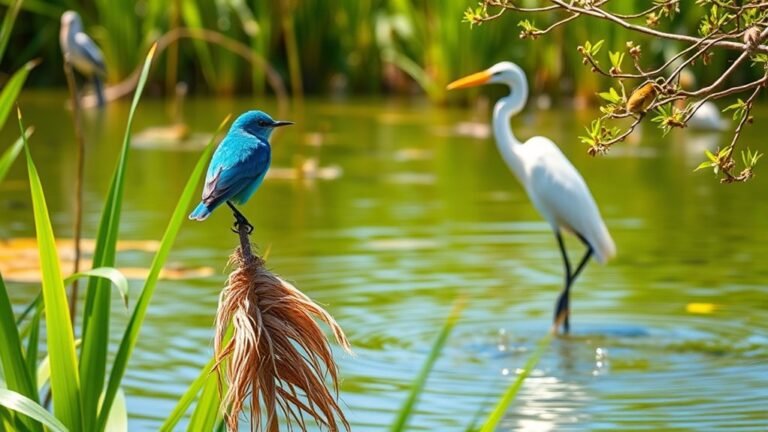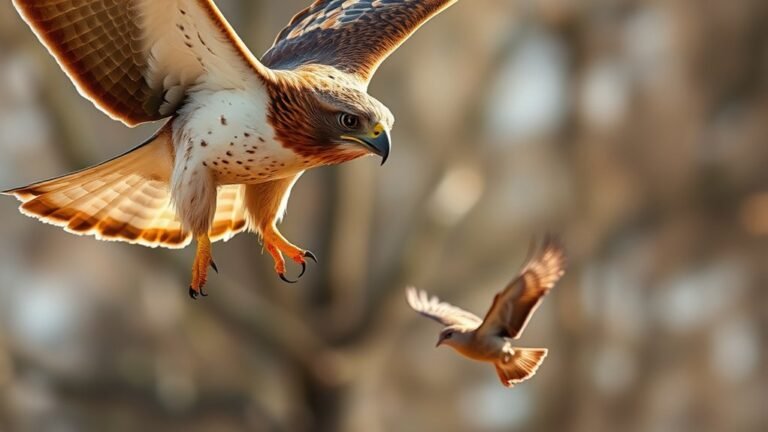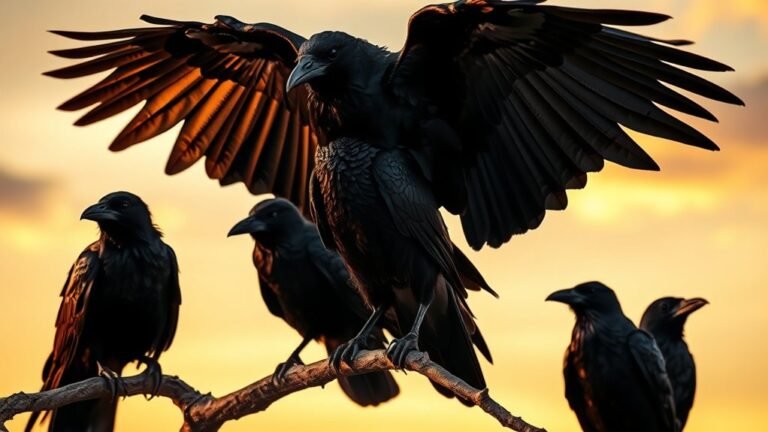Birdwatching Tips: Spotting Black and White Birds in Your Area
Birdwatching can be a fun adventure, especially when you look for black and white birds. These birds can be found in different places, but knowing where to find them can help a lot. It's also important to learn about how they act, where they go during the year, and what sounds they make.
Here are some tips to make your birdwatching better and help you see these beautiful birds more often:
- Know Their Habitats: Black and white birds live in many areas like forests, parks, and near water. Spend time in these places to find them.
- Use Binoculars: A good pair of binoculars can help you see birds clearly from a distance. Look for lightweight binoculars that are easy to carry.
- Listen and Learn: Each bird has its own calls. Listen carefully to their sounds as this can help you find them.
- Check the Seasons: Some black and white birds appear only in certain seasons. Research which ones are in your area during different times of the year.
- Be Patient and Quiet: Birds can be shy. Stay quiet and be patient when you're watching to increase your chances of seeing them.
With these tips, you can enjoy birdwatching and have fun spotting black and white birds. Happy birdwatching!
A Quick Overview
- Check out urban parks and coastal wetlands. These places have many black and white birds that are easy to see.
- Use good binoculars, with 8x to 10x zoom, to see birds from far away.
- Learn bird calls with apps or recordings. This will help you tell different birds apart and make birdwatching more fun.
- Look for different types of places like riverbanks, forests, and shorelines. These spots are where many black and white birds gather.
- Take beautiful photos of birds during the golden hour, which is early morning or late afternoon. Use a fast shutter speed and open the camera aperture to make your photos pop with good backgrounds.
Understanding Black and White Bird Species

When you look at black and white bird species, you find a variety of birds with different habits. Each type of bird prefers a specific type of home. Some like thick forests, where they search for food among the plants. Others enjoy wide-open fields or watery areas.
Knowing where these birds live helps you spot them better.
Watching how these birds attract partners is also interesting. Male birds often show off with special dances or songs to impress females.
Learning these behaviors helps you become a better birdwatcher and connects you with other bird lovers. This knowledge makes you appreciate the beauty of black and white birds in your area even more.
Enjoy your birdwatching journey!
Best Locations for Spotting Black and White Birds
To find black and white birds in the wild, you need to know where they like to hang out. Here are some great places to look:
- Urban parks: Many black and white birds love these parks. They're easy to visit and have lots of different birds.
- Coastal wetlands: These areas have many birds. You might see cool ones, like the black skimmer.
- Riverside areas: Birds like the pied-billed grebe often hang out near water. Keep an eye out for them!
- Forested regions: Black and white warblers can be found in deciduous forests, especially during migration.
- Shoreline environments: Beaches and marshes are great for spotting egrets and other birds that live near the sea.
Essential Birdwatching Gear and Tools

Having the right gear makes birdwatching more fun, especially when you want to see those tricky black and white birds.
First, get a good pair of binoculars. You can choose between roof prism or porro prism types. Each type has its own benefits. For birdwatching, binoculars with 8x to 10x magnification usually work best.
Next, pick a helpful field guide for your area. This book will help you quickly recognize different bird species. Many guides also share tips on how to spot black and white birds in their natural habitats, which is really useful.
Finally, bring along a notebook. Jotting down your observations can make your birdwatching adventures even more enjoyable. You can share your notes with friends and others who love birdwatching too.
With these basics, you're all set to enjoy your birdwatching journey!
Seasonal Patterns and Migration
As the seasons change, black and white birds also change their behavior and where they go. This is important for birdwatchers to notice. Understanding how birds migrate and act during different seasons can make your birdwatching better.
Here are some simple tips to help you:
- Watch the weather. Changes in weather can cause birds to migrate.
- Pay attention to food. When food is scarce, birds may act differently.
- Follow nesting habits, especially in spring and summer when birds build nests.
- Take note of flock sizes. You might see smaller groups in the spring and summer and larger groups in fall and winter.
- Keep track of when birds migrate. This can change each year.
Identifying Bird Calls and Songs

How can you make birdwatching more fun? By learning the calls and songs of black and white birds! When you know their sounds, you feel more connected to nature.
Start by listening carefully for their unique calls. For example, the black-capped chickadee has a special whistle, while the downy woodpecker has a sharp call. These sounds can help you spot them!
To get better at recognizing bird calls, try recording them on your phone. You can listen later and compare different sounds. There are also apps that play bird sounds, which can make it easier to learn.
Finding and identifying bird calls can help you feel more a part of the birdwatching community. It makes your time outdoors even more enjoyable.
Tips for Capturing Stunning Photographs
Learning the calls of black and white birds can make your birdwatching adventure even better. Plus, it helps you get great photos!
Here are some easy tips to take stunning pictures:
- Use a fast shutter speed. This helps you catch birds in flight without blur.
- Take photos during the golden hour. This is the time just after sunrise or before sunset when the light is soft and pretty.
- Use a tripod if it's dark. This keeps your camera steady and helps you take clear pictures.
- Find a good background. Make sure your bird stands out by choosing a background that's different from its colors.
- Change your aperture. A wider aperture blurs the background, so your bird is the main focus.
These simple tips will help you capture amazing photos of black and white birds! Happy birdwatching!
Frequently Asked Questions
What Are Some Common Misidentified Black and White Birds?
You might mix up some common birds like the Eastern Towhee and the Black-capped Chickadee. To tell them apart, pay attention to their size, markings, and behavior.
The Eastern Towhee is bigger and has a bold black and orange pattern. It loves to scratch around in the leaves on the ground. In contrast, the Black-capped Chickadee is smaller with a black cap and white cheeks. It is known for its cheerful "chick-a-dee-dee-dee" call.
Looking at the places where you see them can help, too. Eastern Towhees often like shrubs and edges of woods, while Black-capped Chickadees often hang out in trees.
How Can I Attract Black and White Birds to My Backyard?
To attract black and white birds to your backyard, start by putting up a bird feeder. Fill the feeder with seeds that these birds like, such as sunflower seeds.
Next, make your backyard inviting. Plant native plants that provide food and shelter for the birds. Things like shrubs and flowers can help create a friendly space for them.
Also, think about adding a water source. A birdbath can give them a place to drink and splash around.
Keep your yard calm and quiet. Less noise and activity will make the birds feel safer.
With these simple steps, you'll turn your backyard into a haven for black and white birds!
Are There Specific Times of Day to Spot These Birds?
To see birds better, try to look for them in the early morning or late afternoon. These times are best because birds are more active then. Also, keep track of how many birds you see during different seasons. This will help you know when to spot them more easily. Happy birdwatching!
What Should I Do if I Find an Injured Black and White Bird?
If you find an injured black and white bird, here's what you should do:
- Check the bird: Look at the bird to see how hurt it is. Is it bleeding? Can it move?
- Give first aid: If you can, help the bird. You might need to stop any bleeding or keep it warm.
- Call for help: Find a local wildlife rescue. They can provide the right care for the bird.
Act quickly! The sooner you help, the better chance the bird has to heal.
How Do Environmental Factors Influence Black and White Bird Sightings?
Environmental factors play a big role in how often you see black and white birds. Their favorite places to live and the times they migrate change where they are. When you learn about these factors, it helps you notice them better. This way, you can enjoy watching their interesting behaviors and movements even more.

Luna is the passionate founder and author of Birds and You, a website dedicated to sharing her love for birds with fellow enthusiasts. Through her engaging articles and guides, she aims to educate and inspire others to explore the fascinating world of birds. When she’s not writing, you can find Luna observing birds in their natural habitats or sharing beautiful bird photography on Pinterest. Join her on this journey to celebrate and protect our feathered friends!







